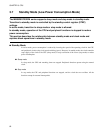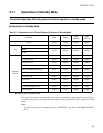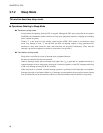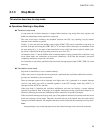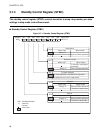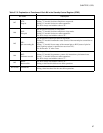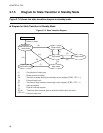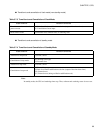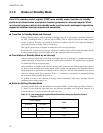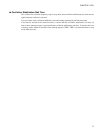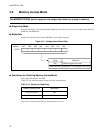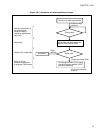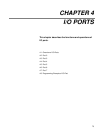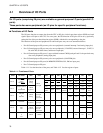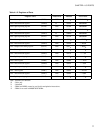
70
CHAPTER 3 CPU
3.7.6 Notes on Standby Mode
Even if the standby control register (STBC) sets standby mode, transition to standby
mode is not allowed when a peripheral function generates an interrupt request. When
an interrupt causes a return from standby mode to active mode, subsequent operations
depend on whether interrupt requests are acceptable.
■ Transition to Standby Mode and Interrupt
When an interrupt request with an interrupt level higher than 11
B
is generated in a peripheral function to
the CPU, an attempt to write "1" into the stop bit (STBC: STP) or sleep bit (SLP) in the standby control
register is ignored. Therefore, any attempt at transition to standby mode fails. (Even after the interrupt is
processed, transition to standby mode is not allowed.)
This type of rejection does not depend on whether the CPU can accept interrupts.
Even if the CPU is processing an interrupt, transition to standby mode is allowed when the request flag bit
for the interrupt has been cleared and there are no other interrupt requests to be processed.
■
Cancellation of Standby Mode by an Interrupt
When an interrupt request with an interrupt level higher than 11
B
is generated in a peripheral function or
another component in sleep mode or stop mode, standby mode is cancelled. This operation does not depend
on whether the CPU can accept interrupts.
After cancellation of standby mode, the CPU normally takes a branch to the interrupt processing routine if
the priority of the interrupt level setting register (ILR1 to ILR4) corresponding to the interrupt request is
higher than the level specified in the interrupt level bits (CCR: IL1 and IL0) in the condition code register
and if the interrupt enable flag is turned on (CCR: I = 1). Otherwise, an instruction is managed following
the instruction causing standby mode to be set.
To prohibit a branch to the interrupt processing routine immediately after return, interrupts must be
prohibited before standby mode is set.
■
Notes on Setting Standby Mode
For setting standby mode using the standby control register (STBC), use the settings specified in Table 3.7-
5 . When 1 is set to both bits at the same time, stop mode has precedence over sleep mode. However, it is
recommended that "1" not be set to the bits at the same time.
Table 3.7-5 Low-power Consumption Mode Established using the Standby Control
Register (STBC)
STBC register
Mode
STP(bit7) SLP(bit6)
00 Active
0 1 Sleep
10 Stop



